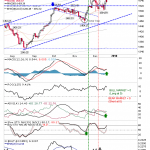It was as recently as this March that the European Central Bank (ECB) followed suit with the likes of the Bank of England, The Federal Reserve and the Bank of Japan and engaged upon its own quantitative easing activities within Eurozone markets. The scheme sees €60 billion worth of asset purchases each month and is planned to run until at least next September. The aims of the ECB program were to ensure price stability within the Eurozone and foster growth and job creation. ECB interest rates have been at 0.05% for a year now, so the bank had no room for manoeuvre in further easing in the hope of stimulating inflation (or choking off deflationary pressure).
The ECB has an inflation target of about 2% – currently inflation in the Eurozone is running at -0.1% (September data). Weak price growth is being cited as a reason making it likely that the ECB will make some adjustments to its QE program before the end of the year. Interest rates remain unchanged and banks must pay the ECB if they wish it to hold their funds; currently -0.2% on overnight deposits.
Speaking in Malta, ECB president, Mario Draghi noted: “The asset-purchase plans are proceeding smoothly and continue to have a favorable impact. The degree of monetary policy accommodation will need to be re-examined at our December meeting. Since our last meeting, short-term inflation expectations have declined but more medium to long-term inflation expectations, after some decline following our last meeting, have now recovered and are basically unchanged since then.”
The Euro fell against other major currencies in the wake of the ECB comments and yields on Eurozone bonds also dipped. The Euro is trading near a three-week low against the Dollar (1€ buys $1.1226) and the yield on German 10-year bonds fell to 0.53%.











Leave A Comment